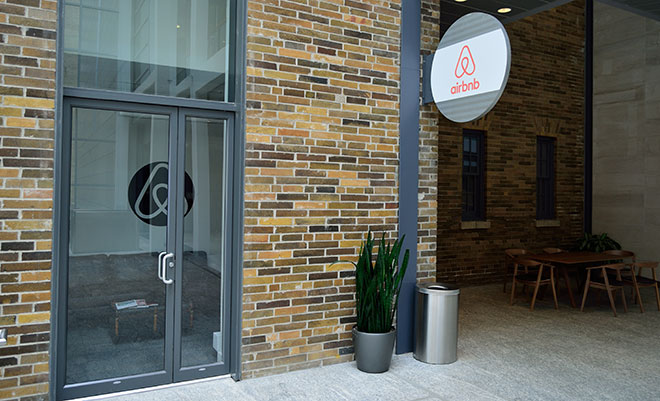There are many factors that play into the overall success of a company. Great products, a clear vision, and talented people are ones I’m sure you’ve heard many times over. But what these factors and more come together to create will ultimately determine a business’s longevity. That is, it’s culture.
In this post, we’ll take a look at two culturally-driven companies, Airbnb and Zappos, and how culture has played a role in their success. We’ll then break down the necessary elements for building a solid culture so that you may improve or create your own.
Airbnb

Winner of Glassdoor’s 2016 Employees’ Choice Award, Airbnb has made culture a primary concern since the beginning. You can clearly see this in a letter Airbnb CEO Brian Chesky sent out to his team to speak on the importance of the Airbnb culture. In it, he tells his team to uphold the company’s core values in everything they do. Whether you’re interviewing someone or just walking down the hall, “live the core values,” Chesky says.
Airbnb’s Core Values
- Host
- Champion the Mission
- Every Frame Matters
- Be a cereal entrepreneur*
- Simplify
- Embrace the adventure
*The fourth one has a pretty good story behind it, and I advise you to read it since we’ll be talking about the importance of stories later on.
All of these core values, Chesky says, are unique to Airbnb and work to reinforce the company’s mission: to make people feel like they belong anywhere. It is the complementary nature of the core values and mission that Chesky feels has greatly contributed to the success of the business.
Now, Airbnb is a special case because they are one of the few majorly successful companies to have their core values down before hiring their first employee (a process that took roughly 6 months according to Chesky). Zappos (who we’ll look at next) didn’t have their core values until they hired their first 100 employees, something Zappos admittedly regrets.
What’s notable about this is that not every successful company knew its core values from day one. So it may take you some time to figure it out for yourself. What is important is that you have them and that they never change. Steve Jobs emphasized this point when he introduced Apple’s legendary “Think Different” campaign.
While not every company has the time to spend half a year to hire their first employee, Chesky makes a good case for himself. He viewed the process as bringing new DNA into the company. He saw this person as someone they could potentially have thousands of, and so he needed to know without a doubt they were the right fit.
Airbnb’s Hiring Process

Airbnb has adopted a hiring process that has become very popular with culturally-driven companies like Google, Twitter, and Zappos. The first round of interviews is much like any other. They want to see if you’re qualified for the position and how well you’ll fit into the role. But Airbnb doesn’t want people who are just “qualified.” They’re looking for “world-class.” The idea is for each new person to be better than the last. This is their way of ensuring continuous growth and innovation.
The second round of interviews attempts to see how well you align with the company’s core values. These interviews are conducted by people who work outside the role the person is interviewing for and are hand-selected by the founders. By having someone outside the role conduct these interviews, Chesky says, you help eliminate biases so that core value alignment remains the primary focus of the interview.
While this kind of interview process may seem overly strenuous for some businesses, to Airbnb, it’s essential. They view their employees as long-term investments that will maintain the strength of the company’s culture. And to Airbnb, a strong culture translates to a long and successful life.
So what didn’t Airbnb have right from the beginning? Well for one, their brand.
The Airbnb Brand
Chesky knew early on that the Airbnb brand would be its defining characteristic. After all, they were providing a service for people to offer up their home to a total stranger. Given the intimacy of their service, the brand needed to make people feel welcomed, trusting, and safe. As you can imagine, this took some time.
In its early days, Airbnb positioned itself as a cheap alternative to hotels. This idea was put into the company’s tagline, “Forget hotels. Save money with Airbnb.” They soon felt that this was too limiting. It didn’t communicate the company’s mission or its core values. So they changed their tagline to “Travel like a human.” This was closer to what Airbnb stood for but still wasn’t clear enough. Airbnb’s current tagline is “Belong Anywhere.” which pretty much says it all.
In 2014, Airbnb introduced its new logo called the Bélo. In a video announcing the new logo, they explain how the Bélo represents the 3 things Airbnb stands for: people, places, love. As you can see, it is a dramatic improvement from their previous logo.


So why am I bringing up branding in a post about culture? Well, according to Chesky, Airbnb’s brand and culture are two sides of the same coin. Your culture will show up through your brand, so you have to make sure they complement each other.
Open and Honest Communication
Another problem that Airbnb had was that its employees felt that it wasn’t living up to its philosophy of holding an open and honest dialog between everyone in the company. To resolve this issue, Joe Gebbia, one of Airbnb’s founders, suggested an idea he called “elephants, dead fish and vomit.” This acted as a nomenclature for creating open dialog.
- Elephants: The big things nobody wants to talk about.
- Dead fish: The things that happened a while ago that people still aren’t over.
- Vomit: The things people need to say and have someone just sit there and listen.
With the new policy in place, employees feel free to voice their concerns and speak their minds when the setting is deemed appropriate. Every employee also receives notes on the executive team’s weekly meetings. This way everyone in the company knows what the executives are talking about so people can ask questions and share their thoughts. Airbnb believes that having this level of transparency helps build trust with its employees and encourages the free flow of ideas needed for innovation.
Zappos

Much of what Airbnb has done to foster its culture can also be said of Zappos. They have well-defined core values, and they have an almost identical interview process. But one big way in which Zappos differs from Airbnb is how they approach their organizational hierarchy. They don’t really have one.
It’s called Holacracy, and it tries to flatten the traditional organizational structure. In an interview with HBR, John Bunch, the Holacracy Implementation Lead at Zappos, described it as a “job jungle gym,” differing greatly from the typical corporate latter.
How Holacracy Works
In this job jungle gym, employees choose their work on a Role Marketplace, a tool that allows employees to see all of the unfilled roles in the company. Workers can then request to fill a certain “role” within a “circle” that serves a particular function. For example, the marketing circle may contain the role of a marketing analyst. Make sense so far?
Within each circle is what’s called a Lead Link. This is essentially the managerial role within the circle. The Lead Link looks at all the role requests and decides which employee would be a good fit for each role. Lead Links also set goals and makes sure their circle is functioning efficiently.
What’s trying to be achieved here, Bunch says, is setting up an organizational structure that gives employees the greatest freedom possible. With the Role Marketplace, workers are given the ability to choose the work they want to do and have the freedom to take on multiple roles throughout their time at Zappos. However, if you’re someone who enjoys performing the same role every day, you can do that too.
Struggles with Holacracy

While some have termed this style of management as a “bossless office,” Bunch feels that this is misleading and makes it seem that Holacracy is chaotic. He argues that there is, in fact, more structure in a holacratic company than a traditional one. With greater transparency and better-defined work, he says, employees have a better understanding of how their work benefits the company.
Now, when Zappos first switched over to Holacracy, it wasn’t exactly met with open arms. But in March 2015, Zappos CEO, Tony Hsieh, gave his employees an ultimatum: embrace the new system or leave with a severance package. In the end, 260 people, that is 18% of the company, quit. While this created some tension within the company, Hsieh felt it was Holacracy’s best chance at success.
What Zappos did highlights the importance of having a homogenous culture. You can’t force people to have the same values as you or to think the same way. So sometimes it’s better to show them the door and bring in new people who are more aligned with your way of doing things.
As you can see, both Zappos and Airbnb had great starts. But not everything was perfect. Now let’s use what we’ve learned and go over what you can do to build your own company culture.
Building Your Own Culture
We should first say that there’s no such thing as a good or a bad culture. It either works or it doesn’t. A good example of a seemingly “bad” culture would be Zappos’s parent company, Amazon.
Amazon has been openly criticized by past employees for its bruising culture. The company’s founder and CEO, Jeff Bezos, has gone on record to say that the Amazon culture is “friendly and intense, but if push comes to shove, we’ll settle for intense.” Whatever you may think of Amazon and its culture, it’s hard to argue against it when you look at what it’s been able to achieve.
The other thing we should say about culture is that it’s best used as a long-term investment. It’s there to help grow and sustain your business. So if the goal of your company is to make a lot of money as soon as possible, you’ll probably never see the returns a fully realized culture can bring. But if you want to build a company that will stand the test of time, you need a strong and spirited culture to keep it going.
Core Values & Mission
As we’ve learned from our two examples, for culture to pay off, you have to build it around a set of core values and a well-defined mission. This makes sense. After all, what is a culture but a group of people working together to fulfill a cause?
Your values and mission don’t have to be a world-changing endeavor. If it is, great. But what’s most important is that it’s unique to your company and will motivate your employees to do good work. When coming up with your values and mission, think about what your business means to the people you serve. What made you want to start the business in the first place? Try to get at the heart of your company and put its meaning into words.
Hire the Right People
When building a culture, you don’t want to hire people to perform tasks. You want people who are willing to invest themselves in their work. So when you go into the interview process, don’t forget to ask questions related to personal goals and values to make sure they line up with your company’s.
Hiring the wrong people in the beginning is kind of like poisoning the well. Say you quickly hire a few people who don’t really care about the job. They’re just there for the paycheck. Their apathetic attitude can spread to new hires who actually want to take the extra time to invest in themselves and see the company’s mission through. This clash of attitudes and values cannot stand in a culturally-driven company.
This means you have to be very careful about who you decide to hire. It’s much easier to run a company with people who already hold your values and are committed to your cause.
Articulate the Vision
Going back to Chesky, he says that the job of a CEO is to do three things: articulate the vision, develop a strategy, and hire people to fit the culture. We’ve already talked about hiring the right people, so what does it mean to articulate the vision?
It means reinforcing the values and goals of the company with everyone you come across. So whether you’re hiring someone, meeting with an investor, leading a team discussion, speaking to a customer, or giving a talk at some PR event, you have to be constantly telling people what your company stands for and what it aims to do. You then of course need to be able to explain how the company will reach its vision, but we’ll save that for a future post.
Founding Stories
Founding stories are a crucial part of growing and maintaining your company’s culture. They’re important because they form your company’s history. They are the moments you can think back on when faced with a seemingly unsolvable problem. You can use them to inspire your team or to remind people of how far you’ve all come and what it took to get where you are. But most importantly, stories allow you to personify your company’s core values.
People are much more likely to understand or believe in an idea if there’s a good story behind it. So as you grow your company, hold on to the pivotal moments that brought you to each step. Write them down if you have to. After telling a few, you’ll quickly come to realize that these stories are what will impact people the most.
Work Environment
Although we didn’t talk about it in our examples, your work environment plays a big part in keeping your culture alive and well. You want your office to be a place that employees enjoy coming to every day.
Your environment consists of the layout, furniture, lighting, amenities, decorations, and color of your walls. In short, how you design your office space can have a huge impact on your culture as well as the productivity and morale of your workers. Your office should be a place that people want to come back to. So take some time and think about how you want your employees to feel when they come to work. Use your office to communicate the personality of your brand and culture.
Instituting the Culture
If you’re still in the process of forming your business, then make sure you give some thought to how you’d like its culture to be. However, if you already have a company and want to change its culture, then you have a much bigger task on your hands. Humans are creatures of habit, and it can be very difficult for us to adopt new ones.
Bringing a new culture to a company takes a lot of patience and may require some drastic measures. This could mean firing people, taking a dip in productivity or revenue, or just having to deal with a lot of confusion. But there’s always a chance that your changes will be welcomed with open arms. However the challenge is met, you have to believe that these changes will help your business grow. You must follow your vision and do what it takes to see it through.
